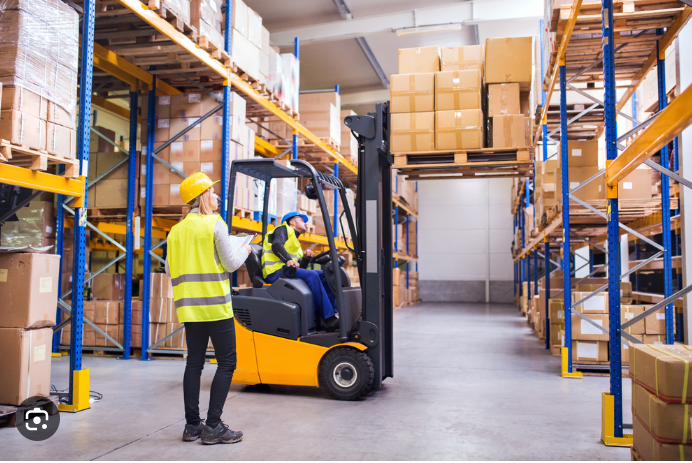In the bustling environment of a warehouse, where heavy machinery, foot traffic, and various materials converge, safety becomes paramount. Warehouse safety mats play a crucial role in mitigating risks associated with slips, trips, and falls, which are among the most common workplace accidents. These mats provide a cushioned surface that not only enhances comfort for employees who spend long hours on their feet but also reduces the likelihood of injuries caused by sudden impacts or falls.
The presence of warehouse safety mats can significantly lower the incidence of workplace injuries, leading to a more productive workforce and reduced costs associated with worker compensation claims. Moreover, safety mats contribute to the overall efficiency of warehouse operations. By providing a stable and slip-resistant surface, they allow for smoother movement of goods and personnel.
This is particularly important in high-traffic areas where forklifts and hand trucks are frequently used. The right safety mats can also help delineate work zones, guiding employees and machinery to operate within designated areas, thereby minimizing the risk of accidents. In essence, investing in quality safety mats is not merely a compliance measure; it is a strategic decision that enhances both safety and operational efficiency.
Choosing the Right Safety Mats for Your Warehouse
Environmental Considerations
The specific environment and types of activities performed play a significant role in determining the right safety mats. In areas where liquids are frequently spilled, such as near loading docks or packing stations, mats with superior drainage capabilities are essential. These mats often feature raised surfaces or channels that allow liquids to flow away from the standing area, reducing slip hazards.
Employee Comfort and Well-being
Anti-fatigue mats can be beneficial in workstations where employees stand for extended periods. They provide cushioning that alleviates stress on joints and muscles, promoting employee comfort and well-being.
Material Composition and Thickness
The material composition of the safety mats is another critical aspect to consider. Rubber mats are popular due to their durability and slip-resistant properties, making them ideal for heavy-duty applications. Vinyl mats may be more suitable for lighter-duty areas where chemical resistance is a priority. The thickness and density of the mats should also be assessed; thicker mats generally offer better cushioning and support but may be more challenging to clean. Ultimately, the choice of safety mats should align with the specific needs of the warehouse environment while adhering to industry standards for safety and performance.
Proper Installation Techniques for Safety Mats
The effectiveness of safety mats is heavily influenced by their installation. Proper installation techniques ensure that mats remain securely in place and function as intended. One common method involves using adhesive or double-sided tape to secure the edges of the mats to the floor.
This prevents them from shifting during use, which could create tripping hazards. In high-traffic areas or where heavy equipment operates, interlocking mats can be an excellent choice as they provide stability while allowing for easy replacement if one section becomes damaged. Additionally, it is crucial to ensure that the surface beneath the mats is clean and dry before installation.
Dust, debris, or moisture can compromise adhesion and lead to premature wear or damage. For larger installations, it may be beneficial to conduct a thorough assessment of the area to determine the best layout for the mats. This includes considering factors such as foot traffic patterns and potential spill zones.
By taking these steps during installation, warehouses can maximize the effectiveness of their safety mats and create a safer working environment.
Regular Maintenance and Inspection of Safety Mats
To maintain their effectiveness, safety mats require regular maintenance and inspection. Over time, wear and tear can diminish their slip-resistant properties and cushioning capabilities. Routine inspections should focus on identifying signs of damage such as cracks, tears, or warping.
Any damaged mats should be replaced promptly to prevent accidents. Additionally, cleaning protocols should be established to remove dirt and debris that can accumulate on the surface of the mats. Depending on the material, this may involve sweeping, mopping, or using specialized cleaning solutions that do not compromise the integrity of the mat.
Furthermore, it is advisable to implement a schedule for periodic deep cleaning of safety mats. This not only enhances their appearance but also restores their slip-resistant qualities by removing built-up grime that can create slick surfaces. In environments where chemicals are present, it is essential to use cleaning agents that are compatible with the mat material to avoid degradation.
By prioritizing maintenance and inspection, warehouses can extend the lifespan of their safety mats while ensuring they continue to provide optimal protection against workplace hazards.
Common Issues and Troubleshooting for Safety Mats
Despite their benefits, safety mats can encounter various issues that may compromise their effectiveness. One common problem is mat slippage, which can occur if they are not adequately secured or if they are placed on an uneven surface. To address this issue, warehouses and businesses such as an Italian restaurant, can utilize non-slip adhesives or consider using heavier mats designed to stay in place under foot traffic or equipment movement.
Additionally, ensuring that the floor surface is level before installation can significantly reduce slippage incidents. Another issue that may arise is mat degradation due to exposure to harsh chemicals or extreme temperatures. For instance, rubber mats may become brittle when exposed to certain solvents or oils commonly found in warehouses.
In such cases, it is crucial to select mats specifically designed for chemical resistance or to implement protective measures such as placing secondary barriers between the mat and potential contaminants. Regular monitoring for signs of wear will help identify these issues early on, allowing for timely interventions that maintain safety standards.
Ensuring Compliance with Safety Regulations for Warehouse Mats
Understanding Regulations and Industry Best Practices
To achieve compliance, it is essential for warehouse managers to stay informed about current regulations and industry best practices related to safety mat usage. This may involve consulting with safety experts or conducting regular training sessions for employees on proper mat usage and maintenance protocols.
Maintaining Documentation and Records
Additionally, keeping documentation regarding mat specifications and maintenance records can serve as evidence of compliance during inspections or audits.
Fostering a Culture of Safety
By prioritizing adherence to safety regulations, warehouses not only protect their workforce but also foster a culture of safety that resonates throughout their operations.

